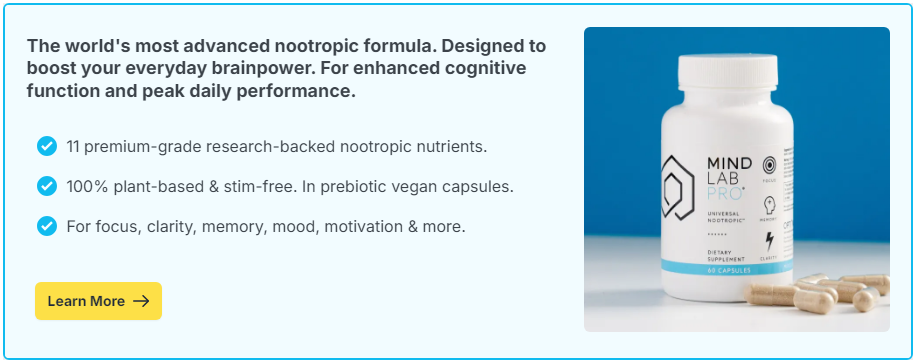
Standardized tests ask you to think precisely while your body acts like a hummingbird. Palms sweat, breath quickens, and simple questions suddenly feel like riddles. You can steady that response. With smart routines, a calm stimulant plan, and, if appropriate, a thoughtful nootropic toolkit, you can sit down with a clear head and a steady hand. Here we provide practical tactics for students facing entrance exams, professionals taking certifications, and anyone who wants sharper focus when the clock starts.
Contents
- Why Jitters Hit During Test Week, Work With Physiology
- The Week Long Plan, Sleep, Study Cycles, Fuel, and Movement
- Smart Stimulant Strategy, Clear Energy Without the Crash
- Nootropic Toolkit for Exam Focus, Used Thoughtfully
- Test Day Playbook, A Steady Start and Clean Execution
- Between Sections and After the Exam, Recovery That Protects Performance
Why Jitters Hit During Test Week, Work With Physiology
Exams feel important, so your body switches to alert mode. Adrenaline rises, breathing speeds up, and working memory narrows. That narrowing is useful in emergencies, not as helpful when you need to compare two math strategies. The solution is not to force calm, it is to give your nervous system cues that widen attention again.
Start with breath that favors the exhale. Try three rounds of a simple pattern, inhale through the nose for four counts, hold for one, exhale through the mouth for six. A long exhale activates the body’s brake pedal, which opens space for reasoning. Pair it with posture. Sit tall, feet planted, shoulders down, jaw loose. Physical cues tell your brain the situation is challenging yet manageable.
Light is another lever. Bright, even light signals alertness in morning study sessions. Warmer light in the last hour before bed tells your system to wind down. Step outside for a one minute sky look after long blocks. The contrast between inside and outside helps reset attention. Add tiny wins to keep motivation steady. Finish each study block by checking one small box, outline done, five practice questions, two errors fixed. Progress that you can see keeps anxiety from spiraling.
Guard attention like it is a limited fuel. Put your phone on a notification diet, keep it off the desk when you study, and use one tab group per subject. Working memory is a fragile container. Every alert that steals your eyes makes the container slosh. When you reduce slosh, facts stay put longer.
The Week Long Plan, Sleep, Study Cycles, Fuel, and Movement
Think of exam week as a short campaign. Your job is to arrive with a rested brain and a tidy toolkit. That requires a simple schedule you can actually follow.
Sleep anchors
- Pick a consistent wake time and protect it. A steady wake time shapes your circadian rhythm better than a perfect bedtime that changes daily.
- Build a 30 minute wind down, dim screens, warm light, light stretch, and a book or notes review that ends ten minutes before lights out.
- Keep the room cool, quiet, and dark. Heavy curtains and a fan are small investments with big returns.
Study cycles
- Use 45 minute focus blocks with 10 minute breaks. Three blocks make a session. Two sessions a day is plenty during the final week.
- Start sessions with retrieval, not rereading, five to ten practice questions before you open notes. Retrieval trains the exact skill the test demands.
- Finish sessions with spaced review cards. Touch old material for five minutes so the brain keeps it available.
Fuel and hydration
- Build plates with protein, slow carbs, and color. Eggs with a small tortilla and avocado, yogurt with berries and oats, tofu with rice and vegetables, salmon with potatoes and greens.
- Snacks that do not wobble energy, nuts, fruit, carrots with hummus, string cheese. Keep a bottle within reach and finish one per study session.
- Avoid large meals within two hours of study or bedtime. Heavy digestion competes with focus and sleep.
Movement
- Short bursts work, three minutes of stairs, a hallway walk, or ten air squats between blocks. Movement lifts mood and clears mental static.
- Get morning light with a brisk ten minute walk. Light plus movement is a potent alertness cue.
Write your plan on a single card each night, the two topics you will hit tomorrow, the practice set you will finish, the time you will stop. Decisions made in advance save you from evening second guessing and late night cram spirals.
Smart Stimulant Strategy, Clear Energy Without the Crash
Caffeine can be helpful, yet it is easy to overshoot. Treat it like seasoning, not sauce. Start with small, timed doses before your first study block, then pause. Many test takers pair caffeine with L Theanine, an amino acid found in tea. The combination often feels steady and clear rather than jittery. If you enjoy coffee, try half a cup before study, then green tea during breaks. If you prefer precise dosing, a small caffeine gum can be easier to control.
Set a hard cutoff in the afternoon so sleep stays protected. A late boost might keep you awake, which steals tomorrow’s performance. If you feel a dip, try light and movement first, open a window, stand up, breathe slowly, and stretch your calves. Your brain often needs a reset more than another cup.
On exam morning, keep caffeine modest. The goal is calm alertness, not speed. Sip water steadily, and visit the restroom before the test begins. Do not try anything new that day. New drinks, new bars, and new supplements can create surprises you do not want during a timed section. If your exam has multiple sittings over several days, consider one small caffeine window in the earliest section and skip late day boosts to protect sleep for the next round.
Nootropic Toolkit for Exam Focus, Used Thoughtfully
Nootropics can support focus and memory when used with a plan. They work best alongside study routines, sleep, and good fuel. The ingredients below are commonly discussed in the cognitive support world and often appear together in comprehensive formulas. Use them thoughtfully, and do not experiment for the first time on exam day. If you are a minor or have a medical condition, consult a professional and follow exam rules before considering any supplement.
Calm Focus and Signal Clarity
- L Theanine: often paired with caffeine for a smoother attention profile. Many people like it during morning study blocks or on test day for calm alert focus.
- Citicoline: commonly used for mental energy and sustained attention during complex work. Some test takers place it before long practice sets when concentration must hold steady.
Stress and Stamina Windows
- L Tyrosine: a building block for dopamine and norepinephrine. People sometimes use it before demanding sessions when decisions stack, such as full length practice tests.
- Rhodiola Rosea: chosen by some for fatigue resistance during repetitive tasks. If it feels energizing to you, place it early in the day rather than near bedtime.
Memory and Longer Horizon Clarity
- Bacopa Monnieri: a long horizon ingredient taken daily over weeks for learning and recall. It supports the background skill of retrieving formulas, vocabulary, and rules during testing.
- Lion’s Mane Mushroom: widely used for general cognitive support. Many describe a clean clarity that suits reading comprehension and precise writing.
Structural and Circulation Support
- Phosphatidylserine, PS: included by some for attention and composure. Because it is not stimulating, people often place it in the late afternoon when polishing notes without adding buzz.
- Maritime Pine Bark Extract: valued for circulation and antioxidant support. Many take it in the morning with the first water bottle on heavy study days.
Pick roles, not a pile. One calm focus option plus one longer horizon option is usually plenty. Keep notes on timing and how you felt during practice. Adjust timing before you change amounts. The goal is a steady signal, not a cabinet full of experiments.
Test Day Playbook, A Steady Start and Clean Execution
The morning of the exam should feel familiar. Run the same rhythm you practiced so your brain slides into gear without drama.
Morning routine
- Wake at your regular time. Brighten the room, open a window, and get a brief sunlight exposure if possible.
- Eat a balanced breakfast with protein and slow carbs, such as eggs with toast and fruit, or yogurt with oats and berries. Sip water.
- Do a ten minute warm up, five easy questions from each section to get your brain moving.
Arrival and setup
- Arrive early with required documents. Follow all exam rules to the letter. If earplugs are allowed, use a familiar pair, not a brand new one.
- Set your small items in the permitted area. Use the restroom. Do three slow breath cycles before you sit.
During the test
- Start each section with a quick scan of instructions. Circle or note any traps, such as select two or answer in complete sentences.
- Use a two pass strategy for multiple choice, first pass answers the quick ones and tags maybes, second pass returns to the tagged items.
- For reading, mark paragraph boundaries lightly and write a two word theme for each, tone mild, evidence chart, author warns. These tiny notes keep you oriented.
- For math, write units and a mini plan before you compute, isolate x, check sign, or draw a quick figure. Preventing errors is faster than fixing them under time pressure.
- Use reset breaths when you notice racing. Two slow cycles take less than fifteen seconds and prevent bigger mistakes.
Timing and review
- Set pace checkpoints, for example, at the halfway time you aim to be past question 60 percent. Adjust calmly if you are behind, move on from sinkholes to keep momentum.
- Reserve a final two minute check for bubbled answers, sign mistakes, and questions that require two selections. A quick line under the key instruction prevents last minute errors.
Stay present between sections. Stand, roll your shoulders, sip water, and avoid post game analysis until the end. Rehashing steals attention from the next task.
Between Sections and After the Exam, Recovery That Protects Performance
If your test runs across multiple days, recovery becomes a hidden advantage. Treat the hours after a sitting like a cool down for your brain.
- Walk for ten minutes after the test. Gentle movement helps your system downshift and clears mental chatter.
- Eat a balanced meal, not a sugar bomb. You want steady energy for review, not a crash.
- Do a light review later in the day, not of the exact test, but of the topics that felt shaky. Capture two or three items to refresh tomorrow.
- Keep caffeine modest in the afternoon and evening so sleep quality stays high. Sleep is the engine of consolidation.
- By bedtime, return to your wind down ritual, warm light, dim screens, brief stretch, then a book. Protect the same wake time tomorrow.
On the final day, celebrate lightly, then write a short debrief while details are fresh. What routines helped, where did timing get tight, which reset worked best. This small note becomes your personal manual for the next challenge.

